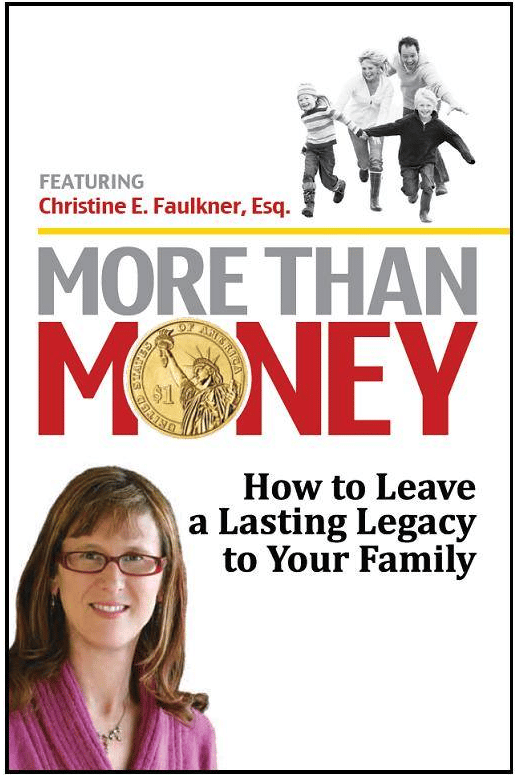If you have a person with special needs in your life, it’s understandable to worry about what will happen when you can no longer take care of them. That’s why you should consider adding special needs planning along with your routine estate planning. There are specific special needs trusts in California that will protect the person with special needs and provide you with peace of mind. Here’s what you need to know about these trusts, how they differ, and which makes sense for your situation.
What Is a Special Needs Trust?
A special needs trust is an estate planning tool that protects a person with special needs from becoming ineligible for government benefits (such as Medicaid and Supplemental Social Security Income) when they have too many assets.
Because many of these government benefits can greatly enhance someone’s quality of life, being unable to access them can negatively impact them. These are complicated to set up, so working with an experienced special needs trust attorney is highly recommended.
What Is a First-Party Special Needs Trust?
A first-party special needs trust is used for the property owned by the person with special needs. That property includes assets such as damages from lawsuits or personal injuries, inheritances or life insurance payouts, retirement plans, or divorce settlements. If people with special needs own these assets outright, they could become ineligible for government benefits. Transferring them into a first-party special needs trust effectively moves the ownership from the person to the trust, so the person will no longer be denied benefits due to owning these outright.
What Is a Third-Party Special Needs Trust?
Most people think of this type of trust when they think of a trust. It’s set up by someone other than the person with special needs, with the person becoming the beneficiary of the trust. The beneficiary does now own the trust, nor do they have direct access to the assets within it. A trustee oversees the trust and ensures that the assets of the trust aren’t distributed to the beneficiary in such a way that makes them ineligible for government benefits.
For example, giving lump sums of cash to the beneficiary could mean the loss of government benefits. However, the trustee can pay for various things on behalf of the beneficiary, such as hobbies, personal services, classes, pet supplies, computers and related equipment, vacations, or transportation.
What Are the Pros and Cons of a First-Party Special Needs Trust?
Pros:
The person with special needs will, if the trust is set up correctly, not become ineligible for government benefits.
The trust can provide a more comfortable quality of life than it would have with only government benefits.
A trustee is appointed to ensure the trust is operated responsibly and not in a way that would cause the person with special needs to lose government benefits.
Cons:
A first-party trust comes with a payback clause. That means that if the person with special needs passes away before all the assets in the trust are spent, the first thing that happens is that those assets are used to pay back any Medicaid benefits the person received while living.
The trust must be established before the person with special needs reaches age 65. That means that if they receive an inheritance that disqualifies them from government benefits after turning 65, it’s too late to protect the benefits by putting them into a first-party trust.
What Are the Pros and Cons of a Third-Party Special Needs Trust?
Pros:
Because a donor funds them, they rarely involve oversight by a court, especially if the donor is still alive.
A third-party special needs trust has no size limit.
If the person with special needs passes away, the assets in the trust can be inherited by the person’s family members or other designees.
There is no age limit to set up this type of trust.
Cons:
A third-party trust cannot hold any property of a person with special needs. That means that if the person receives a sizable inheritance, they can’t transfer it into the third-party trust. If they’re 65 or older when the inheritance arrives, they also can’t place it into a first-party trust, so they may lose government benefits.
Can a Person with Special Needs Have Both a Special Needs Trust and an ABLE Account?
ABLE accounts, which were created by the Stephen Beck Jr. Achieving a Better Life Experience Act of 2014, are special savings accounts for people with special needs that have tax advantages. Anyone can make deposits to the account, including the trustee of a special needs trust, using post-tax dollars. Any income earned on such accounts is not taxed.
One person can have both a special needs trust and an ABLE account. While they both protect resources, they do it in different ways. What’s important to note is that an ABLE account must be for someone whose disability occurred before the age of 26 and that there are both contribution and account limits.
What Should I Do if I Need Help Setting Up a Special Needs Trust?
Call us at 916-685-1225 for a free consultation. Our team of experienced, knowledgeable estate planning attorneys understands how important it is for you to ensure that the special needs person in your life will be taken care of after you’re gone. We know the California laws and regulations focused on special needs trusts, and we can help guide you through the planning process to protect your loved one.



 Call Us Now
Call Us Now e-Mail Us Now
e-Mail Us Now







 Cava and Faulkner,
Cava and Faulkner,